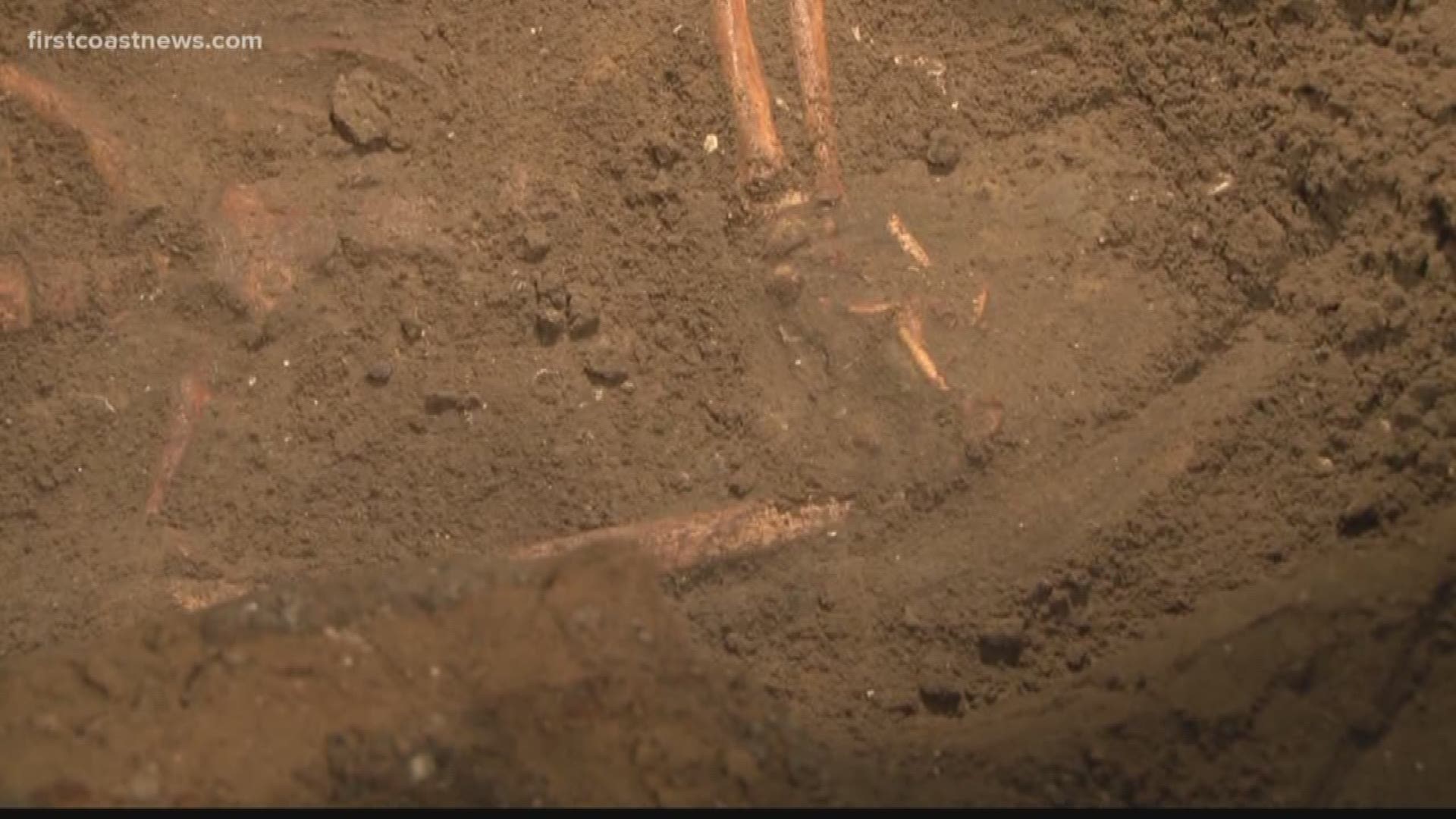ST. AUGUSTINE, Florida — In August, more historical burials were discovered in Downtown St. Augustine They were found in the same area where a couple of dozen burials from the 1500s were found years ago.
However, it's what happened just a day or two before this latest discovery that has the city looking at how it balances road work with archaeological discovery.
In 2017 and 2018, people in St. Augustine marveled at the discovery of burials of people who archaeologists say may have been some of the city's first colonists. The bones dated back to the 1500s.
The skeletons and bones were found under a building on King and Charlotte Streets. Some of the remains were reburied, and it is unknown how many bones are still under the road.
Fast forward to this month, Carl Halbirt, the former city archaeologist, spoke before the city commission in early September. He was concerned that a city project to remove some old pipe from under Charlotte Street could be detrimental to the bones underneath.
"This action will destroy the last vestiges of those remains," Halbirt said.
Since then, the city staff has investigated. City Manager John Regan now says that utility work was done on Charlotte Street on the night of Sunday, August 26. This work was said to be done without anyone from the archaeological department monitoring the work.
On Wednesday, Regan told First Coast News that "The Public Works Department had clearance from the archaeologist that that area had been studied and cleared, and it didn't process the nuance of when you pull out or make any changes to the pipe, there's something that can be exposed below."
He said someone from the archaeological department should have been watching over this activity, but the construction crew did the work without archaeological oversight.
"That work isn't what exposed any type of human remains," Regan said. "It was work on Tuesday, when the archaeologist was present, that human remains were present on a different work and a different location."
Soon after, a meeting took place between the city, the state and the Catholic Diocese (because a colonial Catholic Church used to be there). They talked about the best steps to take in dealing with this particular site and more meetings are expected to take place.
Regan said the goal is "to determine a work plan to study the remaining archaeology."
Meanwhile St. Augustine is in a tight spot. The city has to protect burials and study archaeological remains, because of certain state and local laws.
However, the city manager says the road needs more work before it is finished.
"As we remove sections of pipe, it will be with monitoring by our city archaeologist," Regan said. "So that when there's an area (of interest), we can stop work, have the archaeologist then investigate and continue."
These are the challenges of a modern city with archaeological riches.

